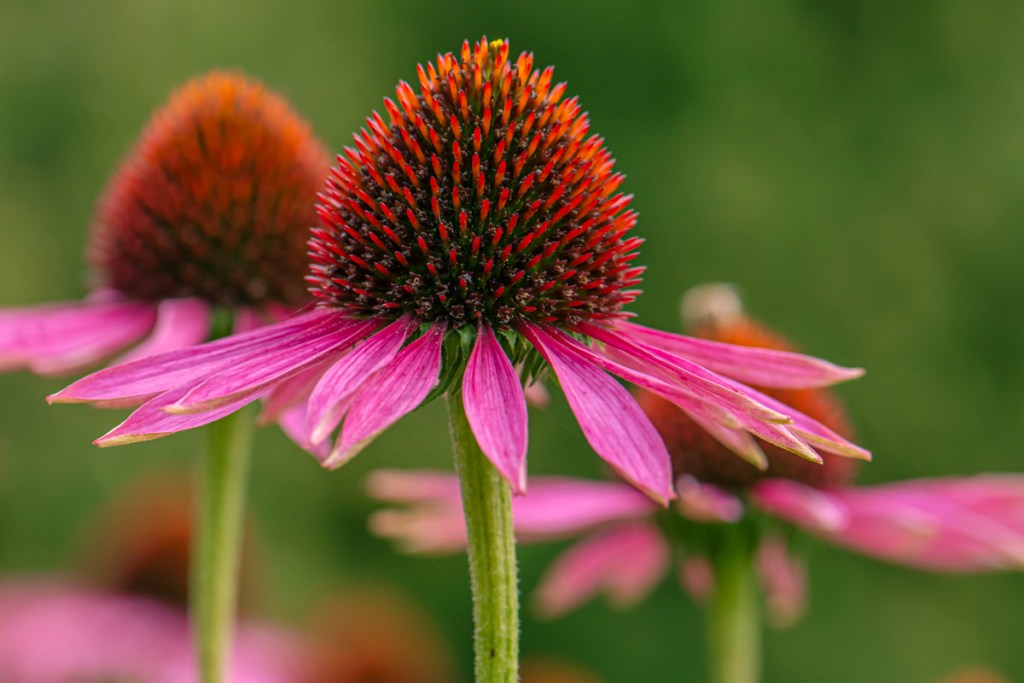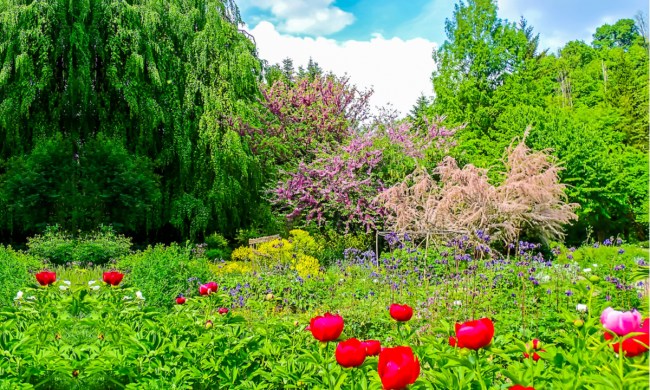One of the biggest struggles when it comes time to plan your garden in early spring is deciding which perennials you’ll choose. Annuals are a bit easier, since you get them brand new every year (for the most part), so a lot of your decisions may be based around how the overall look of the garden comes together and whether or not you want to be out planting new perennials in the middle of summer to keep your garden looking colorful all season long. For seasoned and beginner gardeners alike, long-blooming perennials can be your best friend.
Astilbes
Astilbes are an easy-to-grow perennial with white, lavender, purple, pink, or red blooms that are feathery in appearance. But how long to astilbes bloom? Well, they’re regarded as one of the longest-flowering perennials around, blooming in early to mid-summer and lasting sometimes into — believe it or not — the winter months! Some of the most popular varieties include the Bridal Veil, Pumila, and Fanal.
Light needs: Full sun to partial shade
Water needs: Regular watering. Doesn’t like to dry out. Doesn’t tolerate drought.
Soil needs: Rich, moist soil that’s slightly acidic
Russian sage
Russian sage has won perennial of the year and been a popular long-blooming perennial for decades. They have long spires (or spikes) covered with sky blue flowers. Aside from their long blooming period–roughly ten weeks–Russian sage flowers last for a good while when cut and put in a vase. Because of its height, it works perfectly as a border for the back of your yard, along the house, or along a fence.
Light needs: Full sun
Water needs: Relatively drought-tolerant. Regular watering encourages blooming
Soil needs: No preference

Coneflowers
Coneflowers bring a vibrant appeal to your garden all season long. Their bright blooms come in colors like white, red, yellow, green, and pink, and there are at least twenty-four popular varieties to choose from. Most of them will bloom throughout the growing season, so you won’t need to worry too much about deadheading the blooms.
Light needs: About six to eight hours of full sun per day
Water needs: Relatively drought tolerant but bloom more with regular watering
Soil needs: Sandy, rocky, or clay soil with neutral pH
Daylily (Happy Returns variety)
The Happy Returns daylily, when cared for well, can bloom for most of the growing season from mid-summer to late fall. They can grow up to eighteen inches tall, which means their bright yellow blooms can decorate almost any part of the garden you want! Although more water may bring more blooms, daylilies are a great flower for gardeners who love caring for plants but have limited time to do so.
Light needs: About six to eight hours of full sun per day
Water needs: Enjoys regular watering. Relatively drought tolerant
Soil needs: Well-draining
Blanket flower
Blanket flowers are relatively easy to care for and can adjust to almost any environment. They’re a popular choice for roadside garden beds and for gardeners who don’t have as much time to tend to their flowers as they’d like. Blanket flower blooms come in variations of reds and yellows, bringing color to your garden from early summer to the first frost of winter.
Light needs: Full sun (too much shade can cause drooping)
Water needs: Once or twice per week
Soil needs: Well-draining. Avoid clay soil
Catmint
Belonging to the same family as catnip (Nepeta cataria), catmint plants can appear more bland when the blooms are spent; however, there are many ornamental varieties that will continue to bloom throughout the summer so long as the spent ones are deadheaded. This perennial requires a bit more maintenance to stay beautiful, but you’ll be rewarded with blue-lavender blooms contrasting a gray foliage. Catmint doesn’t have the self-seeding habit that other Nepeta plants have, so you don’t have to worry about it taking over your garden.
Light needs: Full sun (preferred) to partial shade
Water needs: Regular watering. Relatively drought tolerant
Soil needs: Well-draining, humus-rich soil (preferred). Does well in most soil types

Stonecrop (Autumn Joy variety)
The Autumn Joy stonecrop plants are a perennial that has the potential to look good during the entire growing season. Also known as Sedum plants, stonecrops have flower buds that are beautiful long before they even bloom and long after they go to seed. That means stonecrop plants don’t require a lot of deadheading; however, if your plant isn’t too sturdy and starts to fall over, you can always trim them back in early summer to create a sturdier bush.
Light needs: Full sun
Water needs: Light watering every week or two. Excellent drought tolerance
Soil needs: Well-draining
Black-eyed Susan
Black-eyed Susans bloom from mid-summer to early fall, gracing your garden with beautiful, bright yellow blooms contrasted by their dark centers. They’re eye-catching and a favorite among many gardeners. These plants can easily grow up to two feet tall. They’re rather hardy and able to handle the high summer heat well, so if you live in an area with intense temperature, you won’t have to worry about these flowers dying when it reaches over 80 degrees.
Light needs: Full sun (preferred) to partial shade
Water needs: Regular watering
Soil needs: Well-draining
Yarrow
Yarrow is a favorite for butterflies. It blooms flat-topped flowers during the summer and lasting for up to eight weeks. Their foliage starts growing in early spring and is fern-like in appearance. From the foliage, you’ll see flower stems start to grow leading into the summer, and they can be anywhere from two to four feet tall. They’re one of the longest flowering perennials you can have for your garden, with colors ranging from pastels to jewel tones.
Light needs: Full sun
Water needs: Regular watering. Relatively drought tolerant
Soil needs: Well-draining
Red hot poker
The red hot poker plant has spiky flowers that are particularly interesting to hummingbirds. (You may have heard them called torch lilies, though they aren’t true lilies.) Despite their rough appearance, they can actually be a bit of a fussy perennial as it doesn’t enjoy being kept in moist environments. If cared for properly, though, you’ll be able to enjoy their unique blooms for a majority of the growing season. The colors of the blooms vary from variety to variety, ranging from reds to oranges to yellows.
Light needs: Full sun with a bit of afternoon shade
Water needs: Modest watering
Soil needs: Well-draining
Long-blooming perennials can make gardening a little bit easier. Since they mostly come back year after year, it’s important to choose ones that will keep your garden looking colorful throughout the spring, summer, and fall. After all, most flower gardeners don’t want just a bed of greenery come fall — though greenery is beautiful in its own right. Pick and choose your perennials carefully, and enjoy everything they have to offer!


